Mortimer spends his days in an enclosure all to himself, tucked away from the high-traffic areas where the juvenile devils and some joeys delight tourists. At the ripe old age of six, he’s earned a pen down the back near the other ‘retirees’. If it’s sunny, he’ll be sprawled on his stomach, soaking up the sun. The late season snows have made the alpine winter drag on longer than usual.
Some days his food is scattered around his pen, and he uses his sense of smell to seek it out. Other days he’s given a possum or a wallaby to gorge on, satisfying his insatiable appetite. In the wild the survival of a Tasmanian Devil depends on eating what it can, when it can. These scavengers never know where their next meal may come from. To replicate this in captivity, Mortimer has at least two ‘starve’ days a week.
I met Mortimer in 2015, during my first visit to Devils@Cradle. Then, the devil, who was born all black, had a central pen, and regularly climbed up a high log for a better view. Sometimes it seemed like he was showing off. He caught our attention and our hearts. On our next visit we adopted him through the sanctuary’s adopt a devil program.

That visit to Devils@Cradle was a long-overdue introduction to the Tasmanian devil. I’ve spent most of my life in rural Tasmania, but had few encounters with the creatures. The sanctuary opened my eyes to the story of the Tasmanian devil – beyond the Warner Bros cartoon.
Like most of the devils that call the Cradle Mountain sanctuary home, Mortimer was born in captivity. He will never experience life in the wild. Neither will most of the almost 50 devils here. They are part of an “insurance population” created to protect the species from Devil Facial Tumor Disease (DFTD), which has put the Tasmanian devil at risk of extinction.
DFTD has been responsible for killing up to half the devil population in some areas. It’s highly contagious and causes tumors to grow on the side of the devil’s face. This eventually prevents them from eating, and the devils starve to death. Although the disease hasn’t spread statewide, the Tasmanian devil is considered a threatened species. As I watch the devils playfully, and sometimes not-so playfully, bite each other on the face, it’s easy to see how the disease has travelled through the population.
On my most recent visit, just after lunch on a warm afternoon in late spring, the sanctuary was pretty quiet. Mortimer wasn’t the only devil enjoying a snooze in the sun. The devils are smaller than you think and can easily hide under logs and bushes, or in the long grass. Most were asleep, except for one that lazily strolled the perimeter of the main pen, lifting its nose to catch a scent in the air and eventually approaching one of its sleeping pen-mates. The devil woke with a snarl and the trespasser retreated. Devils are usually solitary creatures, but the younger ones don’t seem too bothered by sharing their territory here. The scratches on the older residents proves their tolerance doesn’t last forever. These guys can be vicious.
Mortimer and his friends are part of the plan to prevent Tasmania losing another unique creature. The thylacine, also known as the Tasmanian tiger, was thought to be a threat to livestock and was hunted to extinction. The last known thylacine died in captivity in 1936. This recent history has made the state particularly proactive about protecting the devils.
Devils@Cradle is one of more than 20 centres participating in a nation-wide captive breeding program building an insurance population. The sanctuary is fully fenced from the surrounding bush so the wild population can’t come into contact with the quarantined devils. Some of the captive-bred devils will be released in the wild and there is progress in the fight against DFTD, with the trial of a vaccine and the discovery that some devils seem to be developing a natural resistance to the disease.
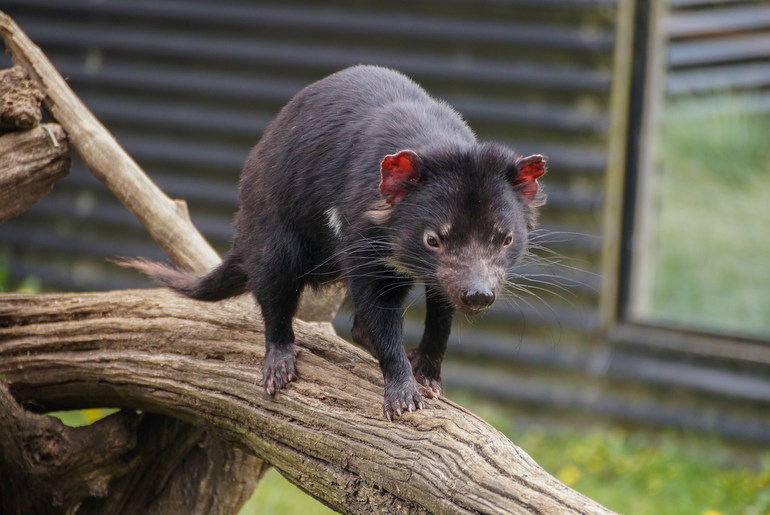
The pen where Mortimer used to live is now home to a female devil and her two joeys. I watched as one playfully climbed over mum, who was trying to sleep. Later the three of them were tugging at a dead wallaby. We found Mortimer down the back. The visitors, mostly Americans with many questions about whether the devils actually spin (they don’t), hadn’t walked down this far. Mortimer was asleep in the sun as the guide predicted. His face and body were marked with scars – the results of scraps over females, food and territory. He’s lived a long life at Devils@Cradle. Any devil over five years is considered old. If Mortimer had spent his life in the wild, there’s a good chance he wouldn’t have survived this long.
The threats to wild devils are real, as is the risk of Tasmania losing an iconic creature. I’ve done the guided tour at Devils@Cradle several times, and it’s always interesting to see the reaction of the other visitors as they learn about DFTD. While people around the world are familiar with Taz, the story of the Tasmanian devil isn’t as entertaining as a cartoon.
We said goodbye to Mortimer, leaving him to lounge in the sunshine, and on the way out renewed our adoption for another year.
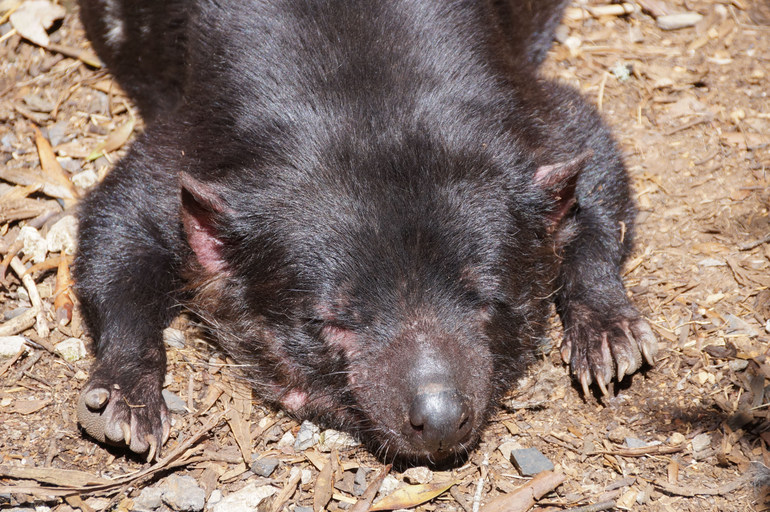
If you go
Devils@Cradle is open from 9.30am – 5pm, at Cradle Mountain. Entry is $20 for adults. Day keeper tours are held at 10.30am, 1pm and 3pm. After dark feeding tours are conducted at 5.30pm and there is an additional tour during daylight savings at 8.30pm. The cost is $29.50.

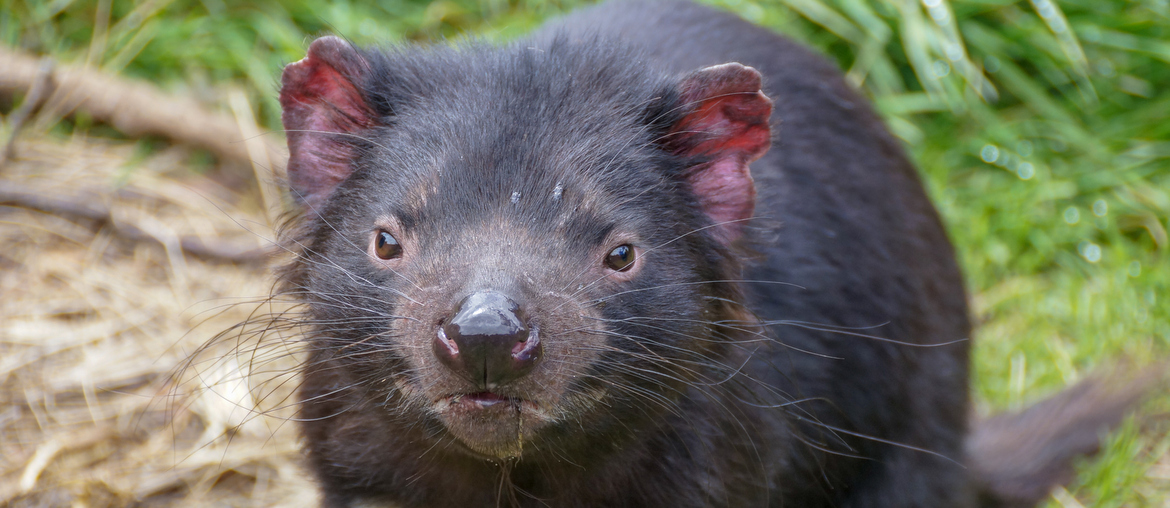






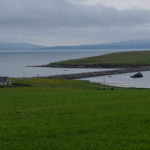

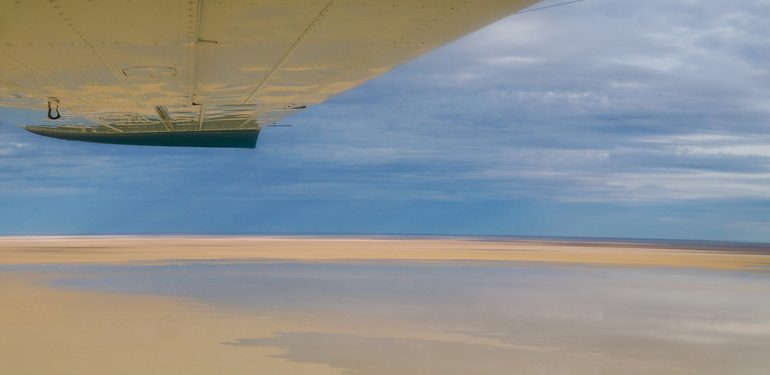
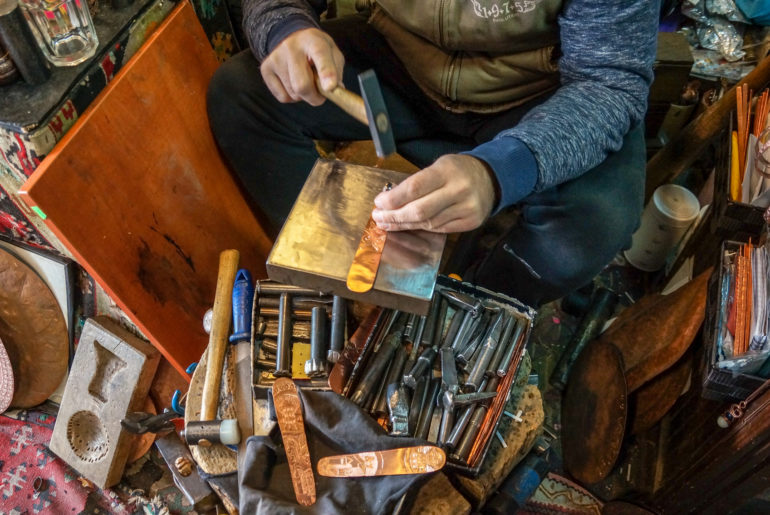
1 Comment
Great post… You captured wonderful pictures in your trip. Thank you so much for sharing it.